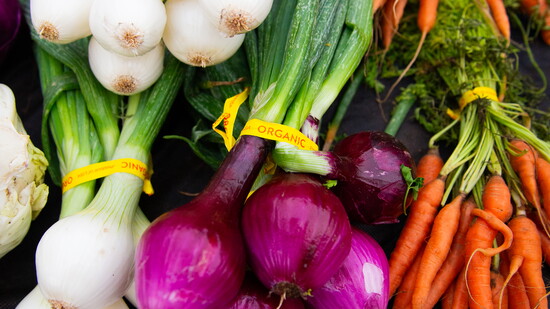Our local farms and backyard orchards yield more than enough to fill most tables. Yet, just beyond that abundance, many neighbors struggle to put fresh, healthy food on their own tables. Since 2010, Veggie Rescue has quietly bridged that gap—collecting surplus produce and delivering it, often on the same day, to schools, food pantries, senior centers, and shelters.
“Our mission has always been simple: take good food that would otherwise be wasted and get it to people who need it, quickly and safely,” says Eryn Shugart, executive director of Veggie Rescue.
Veggie Rescue began when Terry Delaney noticed fields of unharvested produce while families nearby went hungry. Armed with a pickup truck and a few volunteers, he began gleaning—collecting excess fruits and vegetables left in fields after harvest—and delivering them to local nonprofits. Fifteen years later, Veggie Rescue operates refrigerated trucks, employs trained drivers, and partners with over 60 organizations across SB County.
Terry and his wife, Holly, remain actively involved—volunteering at events, handing out carrots from Veggie Rescue’s truck in local parades, and more. Volunteers like Richard Nagler and Linda Stafford Burrows continue to support the mission, while local farmers, including Shu Takikawa from The Garden Of and Helmut Klauer, now Tom Shepherd, of Folded Hills Farm, have donated since the very beginning. “Our farm and food donors are not just partners—they’re part of the family,” Shugart says.
Every “rescue” begins with a call—from a farm with surplus crops, a grocer with packaged goods, or a bakery with extra loaves. Routes are mapped for efficiency, and food is delivered within 24 hours to ensure freshness. “I’ll never forget delivering boxes of heirloom tomatoes from a farm’s bumper crop,” recalls Dave Roberts, program director. “Within 24 hours, they were on plates at senior centers and food pantries. People were so excited to have something fresh and beautiful.”
Roberts is also reviving Veggie Rescue’s gleaning program. “When people pick fruit themselves, they see firsthand where their food comes from—and they know they’re making a direct difference for someone else in their community,” he explains. Gleaning not only rescues food but also connects volunteers to the land and the cause.
In the first half of 2025 alone, Veggie Rescue recovered more than 330,000 pounds of food—the equivalent of 275,763 meals—saving families nearly $572,500. Behind those numbers are personal stories: a mother of three who can now serve fresh vegetables at dinner, and a senior who said deliveries brought not just nourishment but dignity and connection.
As Thanksgiving approaches, gratitude runs deep at Veggie Rescue. “We’re thankful for our donors, our volunteers, and our community partners,” Shugart reflects. “We couldn’t do this without them. Every call we get—whether from a farmer, a grocer, or a backyard grower—is someone choosing generosity over waste.”
But the need is urgent. In SB County, one in three residents struggles to afford basic necessities, and cuts to food programs are further straining families. Veggie Rescue is scaling up—rescuing more food, expanding partnerships, and recruiting more volunteers.
“Food waste doesn’t have to exist,” Roberts adds. “Every time we connect surplus food with someone who needs it, it’s a win for people, for farmers, and the planet.” For those of us fortunate to live in this valley of plenty, Veggie Rescue offers countless ways to give back—through donations, backyard harvests, sponsorships, or volunteer hours. As we gather around our own tables, Veggie Rescue reminds us that gratitude is best expressed through action.
Learn more at www.veggierescue.org.
